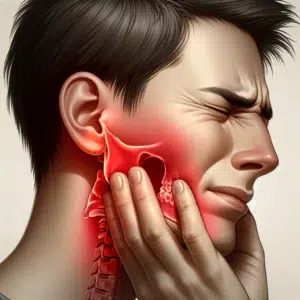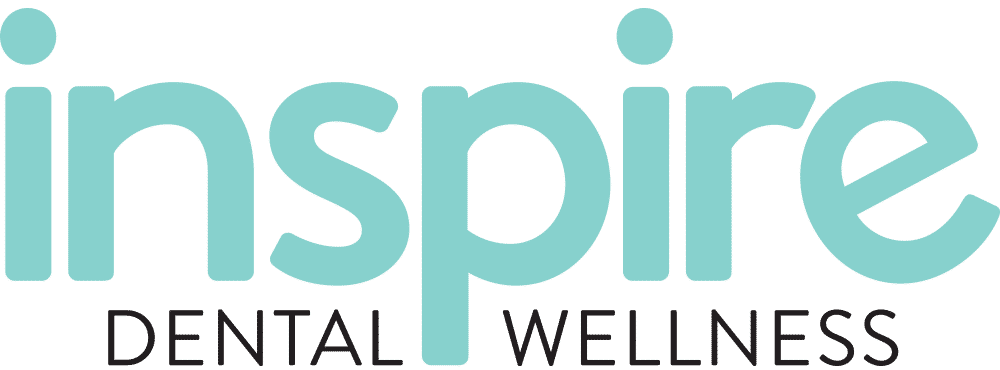TMJ Disorder Treatments Near You
What Is TMJ Pain?

Temporomandibular Joint (TMJ) pain refers to discomfort in the jaw joint and the muscles controlling jaw movement and is often referred to as TMJ disorder. This condition can cause significant distress and impact daily activities like eating, speaking, and even sleeping. If you are looking for TMJ disorder treatment we are here to help!
At Inspire Dental Wellness in Orland Park, we specialize in identifying and treating the root cause of craniofacial pain to help patients achieve a life free of pain without resorting to surgery. Our Chicago team, led by Dr. Erica, is dedicated to helping patients struggling with these symptoms and improving their overall quality of life. We are the premier TMJ specialists.
Request a TMJ / TMD Consult
What Are the Symptoms of TMJ Disorder?
Symptoms of TMJ disorders can range from infrequent mild discomfort to constant, severe pain. If you experience these in any capacity, it may be time to visit a professional at Inspire Dental Wellness:
- Jaw pain or tenderness
- Aching pain around the ear
- Difficulty or discomfort while chewing
- Locking of the joint, making it hard to open or close your mouth
- Clicking or popping sounds when moving the jaw
- Tinnitus (ringing in the ears)
- Vertigo (dizziness)
- Neck pain
Effective TMJ Disorder Treatment
Our TMJ disorder therapy in Chicago starts with an evaluation. We will ask you to rate your pain — anything that makes it challenging for you to think or operate should bring you straight to us. Once we understand your situation, we can curate a treatment plan that addresses your unique concerns. Find TMJ pain relief near you with our selection of noninvasive and advanced therapies. Let us be your TMJ treatment expert!
Noninvasive TMJ Therapies
In most cases, we start by considering noninvasive TMJ pain relief options. These treatments allow you to address your TMJ disorder without affecting your daily life. We often use these tools to relieve our patients’ discomfort:
- Orthotics (dental splints or mouth guards): Custom-made devices designed to reduce teeth grinding and jaw clenching. Orthotics are the cornerstone of long-term relief for TMJ pain, as they help align the jaw properly and prevent further damage.
- Myofunctional therapy: This therapy involves exercises that improve the function of the muscles of the face and tongue. By retraining these muscles, myofunctional therapy can help alleviate TMJ pain and improve jaw function.
- Medications: Over-the-counter pain relievers, anti-inflammatories, and muscle relaxants can help manage pain and reduce inflammation.
- Lifestyle modifications: Stress management techniques, dietary changes, and avoiding excessive jaw movements can play a crucial role in alleviating TMJ symptoms.
Advanced TMJ Therapies
Are you looking for a TMJ dentist? When noninvasive options fall short, our Orland Park team considers other TMJ disorder treatments that can deliver more extensive results. These procedures usually involve some recovery time, but they may help those with severe pain minimize discomfort and live a more fulfilling life:
-
- Injections: Corticosteroid injections can provide relief for more severe cases, but are typically considered only if noninvasive treatments are ineffective.
- Arthrocentesis: A minimally invasive procedure to remove debris and inflammatory byproducts from the joint.
- Surgery: Reserved for the most severe cases where other treatments have failed, surgical options include arthroscopy and open joint surgery. We are the leading TMJ specialists near you.
Request a TMJ Disorder / TMD Consult
Comprehensive TMD Therapy
What Is TMD?
Holistic TMD Therapies
At Inspire Dental Wellness of Orland Park, we take a patient-centric approach to TMJ treatment. We know that often, your TMD disorder may affect other areas of your body and life, and we do everything within our scope to help you achieve whole-body healing. We do this by ensuring every patient benefits from our:
- Comprehensive assessment: A thorough examination by a specialist to diagnose the specific type of TMD.
- Multidisciplinary approach: Collaboration between dentists, myofunctional therapists, and pain management specialists.
- Custom treatment plans: Tailored therapies that may include dental corrections, stress reduction techniques, and rehabilitation exercises.
Innovative TMD Treatments
Our TMJ therapies in Chicago also include some of the latest treatments available for jaw pain. If you are interested in trying something new, we can discuss options such as:
- Laser therapy: Promotes healing and reduces inflammation in the TMJ area.
- Functional orthodontics: Focuses on aligning the jaw properly to relieve pain and improve function.
Frequently Asked Questions
What Causes TMJ Pain?
How long does TMJ Therapy take to show results?
The timeline varies depending on the severity of the condition and the type of therapy. Some patients may experience relief within weeks, while others may take several months. Generally, the more advanced or invasive your treatment path is, the longer it will take for you to recover and see the full extent of your results.
However long your personal journey is, rest assured that we will be there to support you along every step, treatment and procedure.
Is TMD therapy covered by insurance?
Many insurance plans cover certain aspects of TMD therapy. It’s best to check with your insurance provider for specific coverage details or contact our team at 708-556-2959.
While most insurance plans offer some form of coverage, our TMJ specialists in Orland Park can also work with you through affordable dental financing options.
What is the cost of TMJ therapy in Chicago?
The cost of your treatment will vary based on the extent of your therapy requirements, your insurance coverage and other factors. Once you and your provider discuss your options, we will be able to give you a more accurate overview of proposed charges.
Why Choose Us for TMJ and TMD Therapy?
Expertise and Experience
Personalized Care
Comprehensive Support
Schedule Your TMJ Consultation Today to Find Relief
If you’re experiencing symptoms related to TMJ/TMD, it’s crucial to seek professional dental help. At Inspire Dental Wellness of Orland Park, we provide a range of treatments that can help alleviate your symptoms and improve your quality of life. Book your assessment today to find out more about how we can treat your TMJ.
